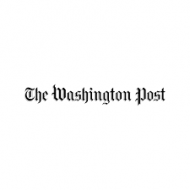For-Profit Colleges Fight Exclusion From Pell Grant Increase in Biden’s Spending Bill

Danielle Douglas-Gabriel
November 23, 2021
For-profit colleges are fighting for their students to be eligible for increased federal financial aid in President Biden’s Build Back Better package after House Democrats passed legislation excluding the sector from new Pell Grant spending.
Restricting access to the federal government’s largest financial-aid program for college students would mark a significant change in the way the program works. Pell dollars are afforded to students based on their family income, not where they enroll.
Still, it is not unprecedented for lawmakers to use federal funding as a vehicle for regulating schools, and House Democrats employed that strategy in the $2 trillion spending bill.
The House advanced the package Friday with a provision boosting the maximum Pell grant by $550 in each of the next four years. That would bring the max to more than $7,000 this year, but an estimated 900,000 Pell recipients attending for-profit college would be excluded from the bump in funding. The new money is only earmarked for the roughly 5 million recipients enrolled in public and private nonprofit colleges and universities.
“It’s a clear attempt to dissuade people from going to for-profit schools,” said Jason Altmire, chief executive of Career Education Colleges and Universities, which represents for-profit colleges. “We’re talking about disadvantaging students [at for-profit schools] in a way that doesn’t address accountability.”
Democratic aides say the House Education Committee, which crafted the provision, targeted the limited available education money at areas where students can get the most value. They say for-profit college tuition is far more expensive than comparable programs at public institutions, and students at the schools tend to borrow at higher rates and too often are left working low-wage jobs.
A House aide pointed to research by George Washington University professor Stephanie Riegg Cellini that shows for-profit colleges raise tuition to match financial aid increases, eating up federal dollars designed to lower the cost for the neediest students.
“There is substantial evidence that the tuition at the low-quality for-profit schools far exceeds the value of the education they provide,” said Rep. Robert C. “Bobby” Scott (D-Va.), chair of the House Education Committee. “Enrolling students is not the same as serving students.”
Scott said “fraudulent and deceptive practices” at certain for-profit institutions have already cost taxpayers more than $2.5 billion this year in student-loan cancellations for defrauded borrowers.
Democratic lawmakers have long sought to curb federal money going to for-profit colleges, a segment of higher education they say has a track record of predatory practices dating back to the creation of the G.I. Bill in 1944.
Proprietary schools are already excluded from institutional funding supplied by the federal government. What’s more, the 90/10 rule prohibits for-profit schools from getting more than 90 percent of their operating revenue from federal student aid.
“For-profits have over many decades been associated with scandals and students being ripped off,” said Robert Shireman, a senior fellow at the Century Foundation, a liberal think tank. “Every time the government tries to institute controls, the for-profit institutions claim they are being targeted, they fight it or undermine it by adding loopholes.”
The Biden administration has signaled its intention to hold for-profit colleges more accountable for student outcomes. The Education Department has resurrected an enforcement unit charged with rooting out fraud and is drafting a new version of the Obama-era gainful employment rule that threatens to cut off financial aid dollars to career training programs whose graduates consistently have more debt than they can afford to repay.
“There is going to be a debate on the regulatory side and the legislative side about the role of for-profit higher education. [Pell] is not the place to have that debate,” said Altmire of Career Education Colleges and Universities.
Continue Reading
Share








